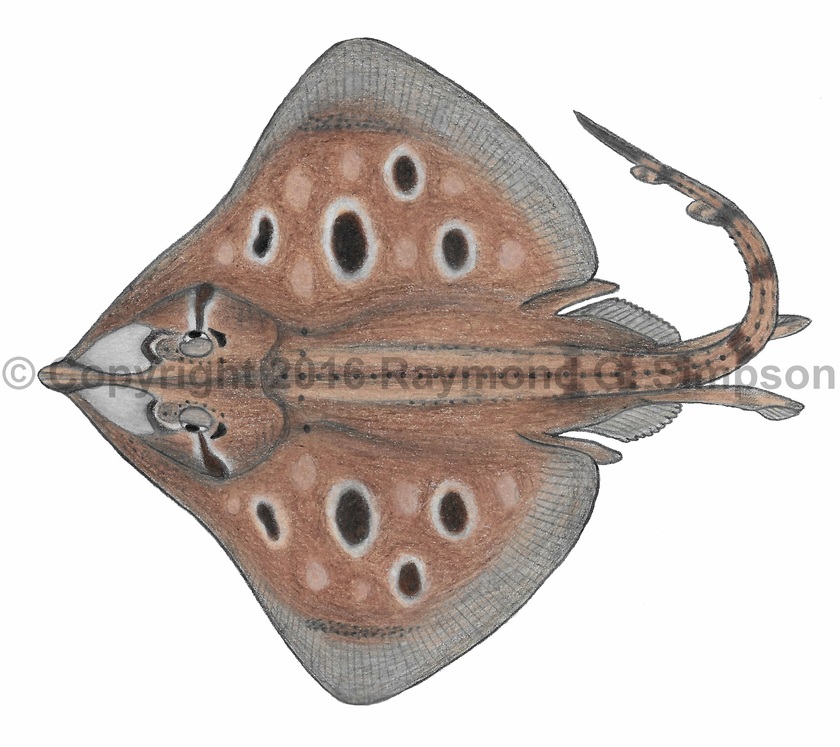
Common Name
Rio Skate
Year Described
Müller & Henle, 1841
Identification
Median thorns: 21-57 (nuchal + tail thorns)
Disk rhomboidal and entirely smooth. Ventrum smooth. Median thorn row continuous from nape to dorsal fin. Snout moderate with slightly convex anterior margins. Snout with semi-translucent window between pectoral origin and snout tip (unique to Atlantoraja and Rioraja). Anterior margin of pectoral fins concave. Eyes very small. There are three ocular thorns. No scapular thorns. Eyes small. Median row of tail thorns single. Dorsal fins are small, widely separated, with no interdorsal thorns. Pelvic fin notched with projecting anterior lobe and rounded posterior lobe. Tail is about body length and slender, with long lateral folds. Caudal fin absent; long tail tapers to fleshy tip. Male claspers long; reaching dorsal fin. Teeth are conical and sharp.
Color
Body medium to reddish brown above grading to paler on the margins. Markings are variable but a central dark blotch on each pectoral fin is usually most prominent. There are usually two others forming a triangle with the middle one. A dark band running from the eye is often present. Other dark spots and/or pale blotches are variably expressed. Rostrum with semi-transparent patches and a dark brown tip. Tail with indistinct dark bands. Belly pale with dark pores.
Size
Maximum size to 70cm TL.
Habitat
Demersal on soft bottoms from shallow coastal waters to deep continental slopes (to 600m)
Range
Known from SE Brazil to Argentina
References
Figueiredo, J. L. 1977. Manual de pixes marinhos do sudeste do Brasil. I. Introduçao. Cações, raias e quimeras. Museu de Zoologia, Universidade de Sao Paulo. Brasil. 104 p.
Last, P.R., White, W.T., Carvalho, M.R. de, Séret, B., Stehmann, M.F.W & Naylor, G.J.P (Eds.). 2016. Rays of the World. CSIRO Publishing, Melbourne.
Other Notes
Unique among other family members in snout morphology, coloration, smooth skin texture, separated dorsal fins, and long tail tip with no caudal lobes.